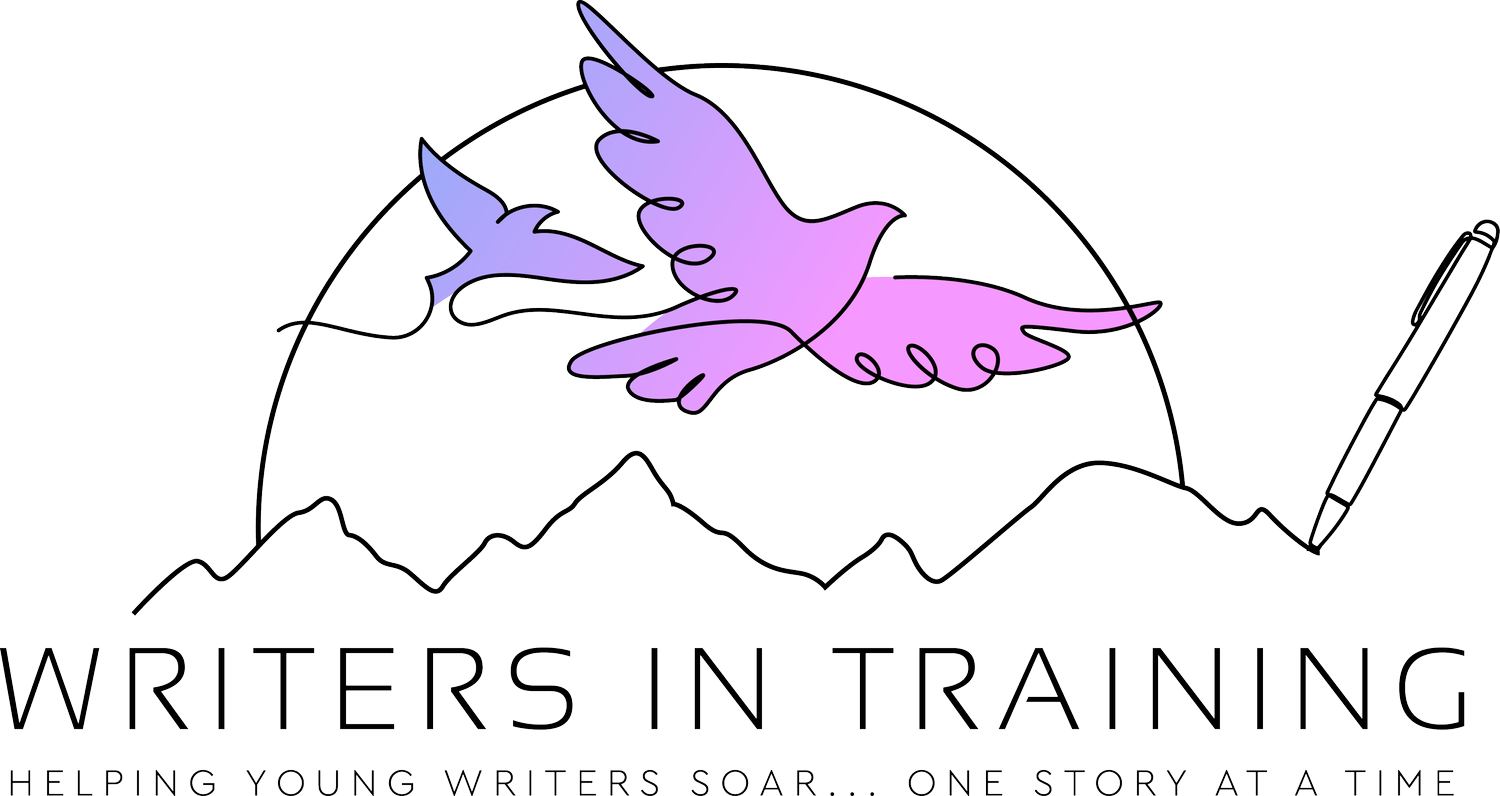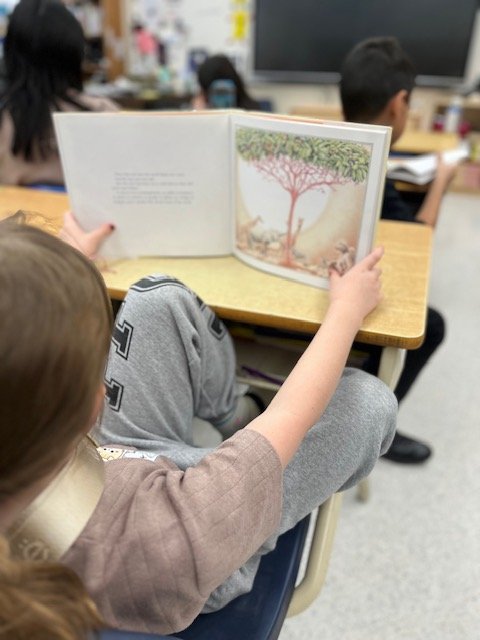The Power of Mentor Texts: Thinking Like an Author
“You have to write the book that wants to be written. And if the book will be too difficult for grown-ups, then you write it for children.”
I had just finished reading Nancy Tillman’s picture book “You’re Here for a Reason” to my third graders. Nancy Tillman has a gift for handling meaningful topics with grace and wisdom. This book emphasizes the value and worth of every individual and how the world “like a puzzle” would be incomplete without them. She also touches on the truth that, in this life, we will experience difficult things. As I put down the book, one of my students raised her hand.
“Mrs. Delmar, is life hard?”
What a deep question for an eight-year-old.
“Oh, yes,” I responded. “Life can be very hard at times, but it is also full of joy and goodness. Sometimes, the hard things we go through teach us something important we would not have learned otherwise. Those hard things make us kinder people. They help us to be more compassionate to others when they go through hard things.”
What followed was a tender discussion about the inevitability of difficult circumstances and the mysterious truth that those hard things often turn for our ultimate good. We talked about the things some of our classmates had already been through, like losing a pet or the death of someone they loved. We also discussed life’s joys, such as birthday parties, special vacations, and knowing that our parents love us. It was a deep conversation inspired by reading a 300-word rhyming picture book.
That’s the power of the written word.
As an elementary school teacher, I am constantly reading to my students. My goal is to help them develop a love of reading. There are some books we read just for pleasure. Others, like “You’re Here for a Reason,” stimulate deep conversations about life. They compel the reader to appreciate deeper meaning beyond the words on the page. Well-written books can be used to show students how to read in an authorly way. In other words, how to think like a writer. In the world of education, we call these “mentor texts.”
“Read like an author” is advice often given to adults who aspire to write. They are encouraged to read often and widely and, as they do, to think about what aspects of the writing craft the author used to create a book worth reading. To put it another way, aspiring authors are encouraged to use their reading as research and to apply what they learn to improve their writing craft.
If this is good advice for adult writers, it is essential for young writers. Aspiring authors must develop the habit of authorly thinking as early as possible. The best way to encourage authorly thinking in the early years is to read and discuss mentor texts.
Picture books often follow a distinct pattern readers can emulate. Margaret Wise Brown’s classic “The Important Book” is a prime example. Ms. Brown takes everyday objects and describes their attributes in free verse, leading us to discover each object’s most “important” trait.
Here is an example from the book: “The important thing about snow is that it is white. It is cold, and light, and it falls softly out of the sky, it is bright, and the shape of tiny stars, and crystals. It is always cold. And it melts. But the important thing about snow is that it is white.
Once students understand the pattern, they can imitate it to describe an object of their choice. Depending on their skill level, they can create short or longer, more complex descriptions. Brown does both in her book. Regardless of skill level, all writers should be encouraged to notice the strong verbs and vivid adjectives Ms. Brown used. Vivid word choice is an essential skill for an author. In emulating how this author deliberately chose her words, young writers begin to understand that they must be intentional about the words they use, too. They begin to think like authors.
Another wonderful pattern book is Judi Barrett’s “Things that are Most in the World,” a whimsical book about superlatives - words that show the degree or quality of something, such as longest, skinniest, hottest, etc. Children love John Nickle’s imaginative illustrations, paired with child-relatable ideas like, “The hottest thing in the world is a fire-breathing dragon eating a pepperoni pizza.” After reading the book, children quickly grasp the concept of a superlative word and how it is used in a sentence. Learners also see that adding specific adjectives and strong verbs to a sentence can create a rich visual image for the reader. After brainstorming and generating a list of superlative words, they follow Barrett’s pattern to write and illustrate their own “things that are most” description. In this way, a simple picture book becomes a teaching tool with several purposes: to encourage a love of reading, learn a specific vocabulary skill, practice authorly thinking, and understand how to craft descriptive sentences using specific adjectives and vivid verbs.
Any text can be used as a mentor text. Picture books, early chapter books, novels, poetry, and nonfiction pieces are all useful for developing authorly thinking. Look for well-written texts that highlight one or more writing craft skills.
Here are some guidelines when considering which texts to use:
1. Good mentor texts will connect with readers emotionally. They will make you laugh, cry, or reflect on a topic deeply.
2. Good mentor texts will be age-appropriate. They present hard topics in a way that stimulates healthy conversations. Readers can relate to the concepts and understand the humour used.
3. Good mentor texts lend themselves to reading aloud. If you find yourself stumbling over sentences which are too long or complex, you’ll lose your listeners, and they will miss the purpose of the text.
4. Good mentor texts should be used briefly. Enjoy the story. Point out and discuss the writing craft skill. Apply the skill immediately or in a future writing piece. If you spend too long analyzing a mentor text, it becomes dull and loses its effectiveness.
5. The best mentor texts do not simplify vocabulary. A good author includes interesting, specific vocabulary to challenge readers.
I’ve explored many mentor texts. Click here to access a list of my favourites, or click on the Mentor Texts menu.
Have you used any of my recommended mentor texts? Do you have any mentor texts you’d recommend? I’d love to know more! Please comment below or click here to send recommendations and ideas.
“Life can be tricky, there isn’t a doubt.
You’ll skin your knees trying to figure it out.
But life works together, the good and the bad,
The silly and awful, and happy and sad,
To paint a big picture we can’t always see…
A picture that needs you, most definitely.”

